January 28, 2020
“Instrumental Engineering in the Time of Sir George Airy” – History of Astronomy Talk – 28th January 2020
Bill Barton
Report by: Bobby Manoo
In the first of our History of Astronomy sessions for this season, we were presented with a talk by Bill Barton. Bill is a founding member of the Society of the History of Astronomy and the Deputy Director of the British Astronomical Association Historical Section. He is also a member of a number of other Astronomy societies and has recently published his research on Alice Grace Cook.
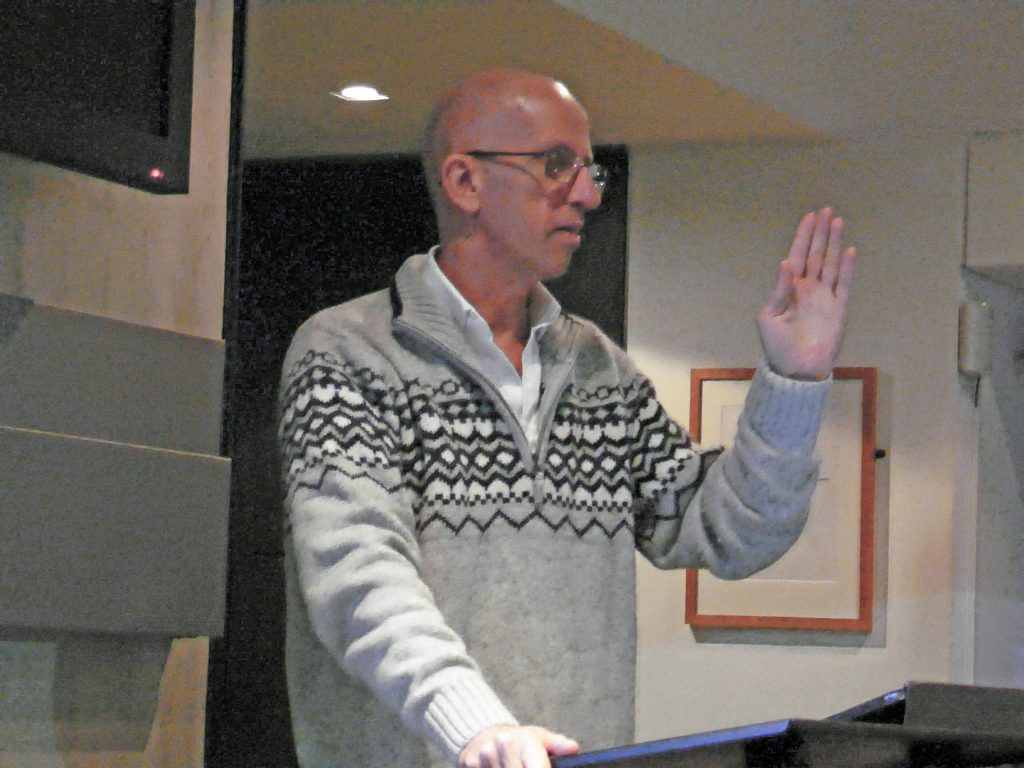
We were first taken through three sets of Family Trees, the Airy/Biddell Family, the Ransome Family and the May Family. Bill explained that the The Biddell family forms the bridge between the Airy and Ransome families and we looked at the close relations between the various generations and how their collective work in the field of Astronomy culminated at the Royal Observatory in Greenwich.
To kick things off, we were told about the aftermath of some tragic circumstances which led the young George Biddell to be raised by his uncle, Arthur Biddell. A close bond developed between nephew and uncle which endured for many years. The anti-slave campaigner Thomas Clarkson (1760-1846) lived in the same area as Arthur in Playford, Ipswitch and he was instrumental in securing a place for George to study at Cambridge University.
The other two families of interest, the May and Ransome families were Quakers or Freemasons. Robert Ransome established a ploughshare casting business in Ipswitch which had developed the idea of rapid cooling molten iron to produce a harder material. This concept was used to produce tools for agricultural purposes such as his much acclaimed self-sharpening plough share.
Charles May came to Ipswitch in 1835 and joined the Ransome family business. The establishment became quite successful with the introduction of Charles – partly because of his engineering skills within the firm. They eventually renamed the company Ransome and May and held a patent for compressed wooden treenails which were used to secure railway chairs to the sleepers.
Charles always had a passion for Astronomy. He was a council member for the Royal Astronomical Society (RAS) and presented papers on the application of chilled cast iron as pivots for astronomical instruments during an annual meeting of the British Association for the Advancement of Science.
In 1835 George Airy was appointed as Astronomer Royal at the Royal Observatory in Greenwich. His immediate task was to modernise the equipment and replace all the neglected equipment. He turned to the company Ransome and May for this mammoth task.
Charles May was instrumental in the production of several telescopes, amongst them the Northumberland Refractor at the Cambridge University Observatory and the Great Equatorial and Airy Transit Circle, both at the Royal Observatory Greenwich.
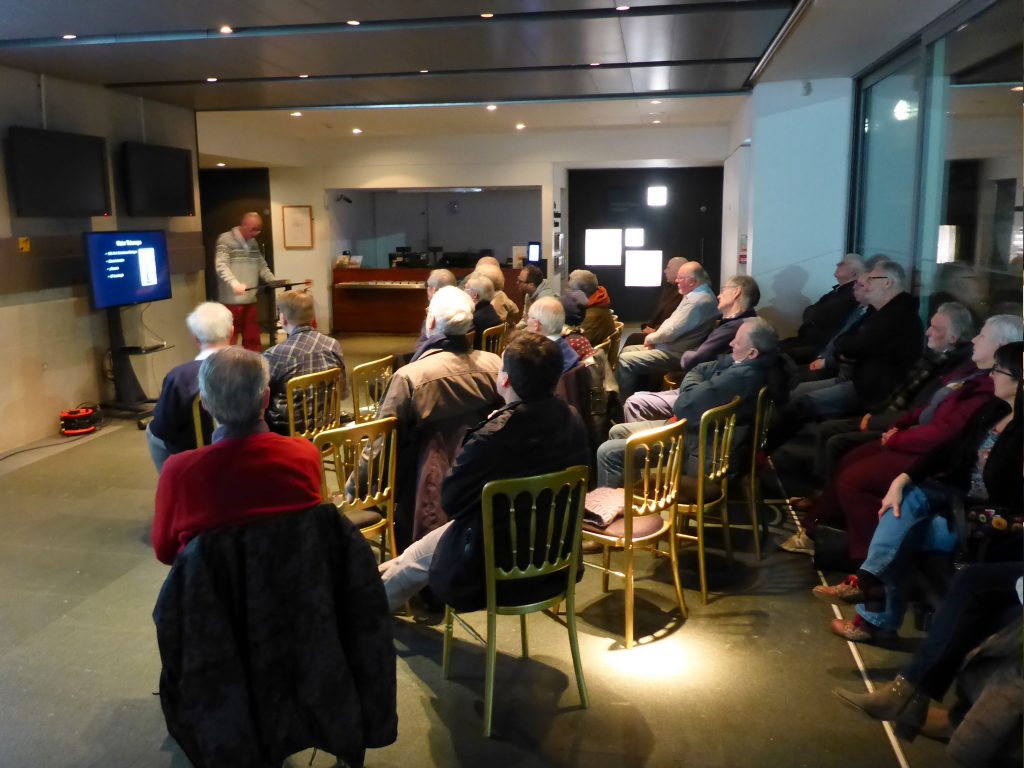
In the final stages of his talk, Bill took us through numerous pictures of the many instruments which were built during the time of Sir George Airy with the expertise of the Ransome and May. These included the following:
- Cambridge – Northumberland Refractor
- Greenwich
- Altitude & Azimuth Instrument
- Airy Transit Circle
- South East Equatorial
- Water Telescope
- Hartwell House &
- Bury Hill Observatories
Many thanks to Bill for a wonderful and informative talk.
Photos by Malcolm Porter and Bobby Manoo
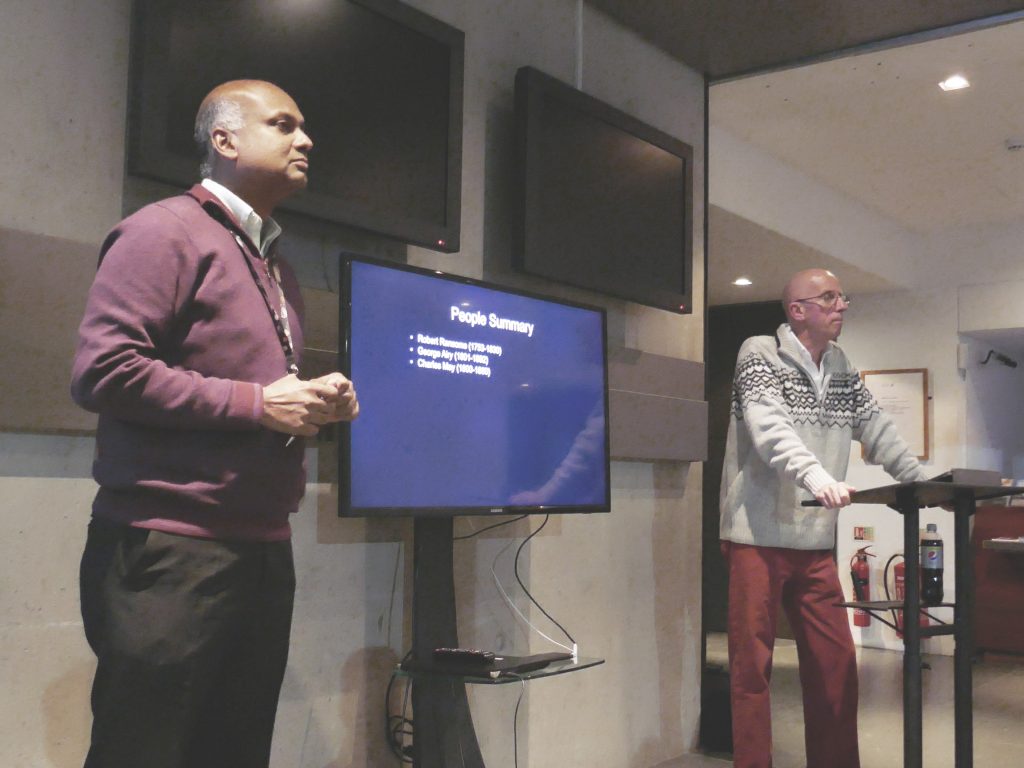
Bobby introduces Bill to the Flamsteed 
Bill Barton 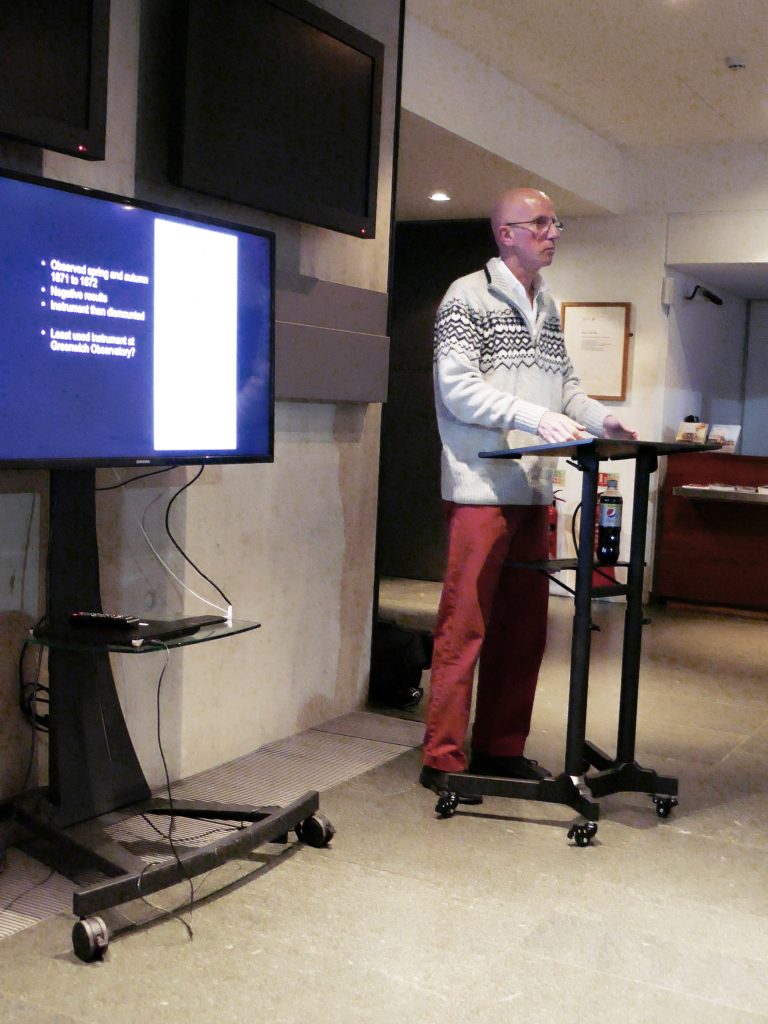
Bill giving his talk to the Flamsteed 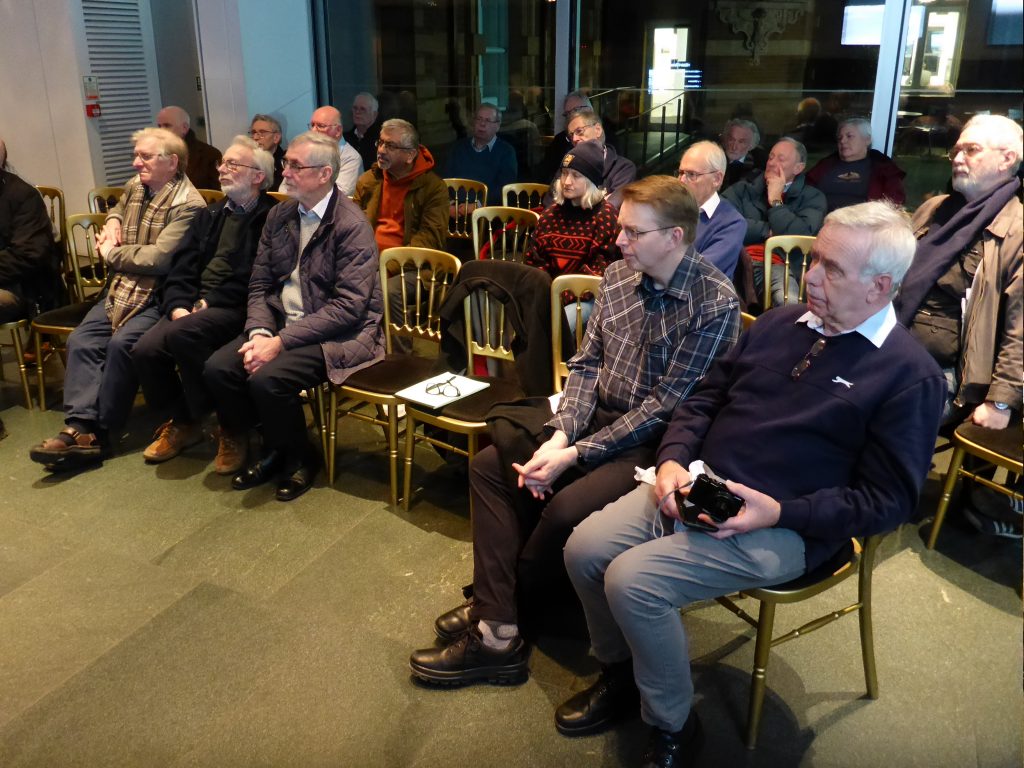
Flamsteed audience 1 
Flamsteed audience 2
Posted under: History of Astronomy, Meeting Report

You must be logged in to post a comment.